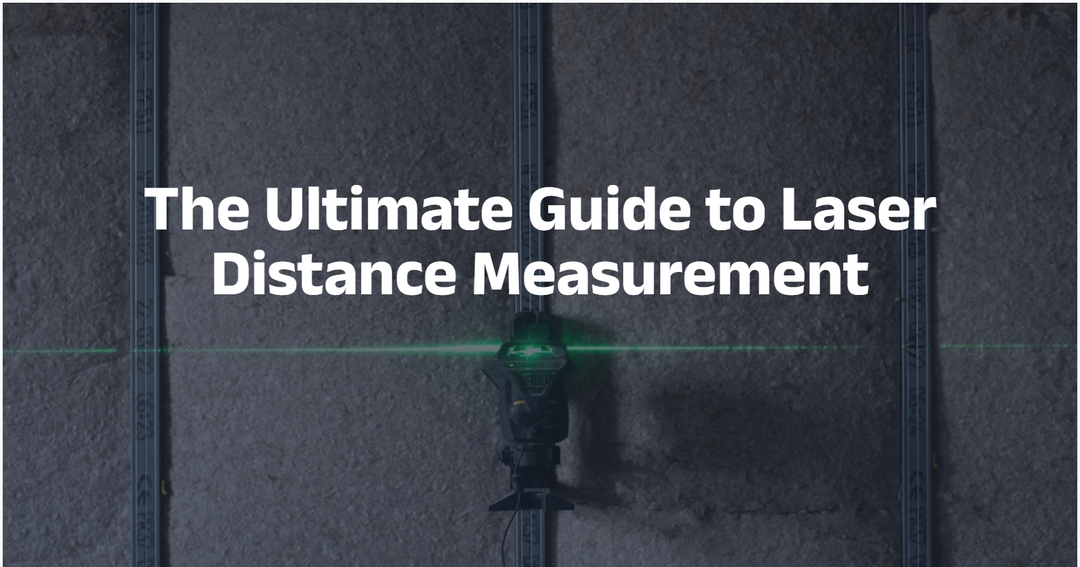Top 5 Best Electric Wire Detectors of 2023
The Common Ground Alliance estimates that there are approximately 20 million miles of underground utilities in the United States alone. This undoubtedly raises the possibility that the excavation site may contain underground hidden electric lines.
Here comes the role of an underground wire detector that will help you save time and money by detecting the course of hidden/buried wires and measuring the depth in a simple, accurate, quick, and affordable way.
Not only does this wire locator reveal potential breakage, but it also helps you avoid digging in the wrong place.
Finding the best underground wire locator on the web can take time and effort. Here are the top five best underground wire locators, as determined by our research. Please continue reading to get our buyer's guide and other helpful information for your digging needs.
What is an underground wire locator?
The transmitter and receiver are the two primary parts of an underground wire locator. An alternating current (AC) will be sent from the transmitter to the wire. The electromagnetic field is produced when the current flows. The receiver can then trace the source of the electromagnetic field and record its location. You will have a full report of the situation on the ground. On top of that, these wire locators would allow you to find the breaks without spending days digging the ground.There are two different approaches to tracing the position of barred buried cable and pipe.
Active Locating:
Active locating is the first common method to find out where the target is. This method produces the electromagnetic field when the locator tool sends out a specific frequency without using the transmitter.
Passive Locating:
The passive locating method lacks a transmission frequency feed since it receives the current existing flowing through an underground line.
The five products under our radar today are as follows:
1. Noyafa NF-825 MTR
2. KOLSOL Underground Wire Locator F02 Pro
3. Klein Tools VDV500-705 tone/probe test and trace kit
4. EXTECH CB10
5. Armada PRO871C
We will look at each device, its features and benefits, and its pros and cons to help you make the best decision.
Noyafa NF-825MTR:

The Noayafa NF-825MTR is a helpful device for locating and determining the direction of wires and cables hidden behind walls or beneath the ground. Additionally, it can trace electrical faults back to their source and pinpoint the precise location of any break or short in the wiring.
The tool's compact and lightweight form makes it easy to carry and maintain. You can utilize NF-825MTR for a wide range of purposes, including but not limited to: outdoor wiring layout installation, home decorating wire layout installation, appliance repair, wire maintenance, and more. The probe has a built-in work light that may illuminate dimly lit areas. This tool will make the process much simpler and more efficient when working on a project that involves discovering several underground wires.
|
Pros: ● Advanced 2023 model ● Detect hidden AC wires in sec ● Locate faults in cables ● Type-C USB for versatile charging ● NCV induction pen ● Adjustable search sensitivity ● Classic wheel design ● Signal display lights ● Ergonomic, sturdy, and robust design ● Bright LED flashlight ● Pluggable GFCI socket tester
|
Cons: ● Slightly expensive but worth every single dollar spent on it |
KOLSOL Underground Wire Locator F02 Pro:

The KOLSOL F02 underground wire locator is a device that can locate the course of non-energized wires that are buried underground or hidden behind walls. The F02 may also find a particular circuit breaker, pinpoint cables before drilling, and validate dig sites that are buried beneath. To get started, one must read and follow the directions included in the manual.
|
Pros: ● Easy to use and transport ● Lightweight and compact ● Range of 1000 feet long and 3 feet deep ● Affordable price |
Cons: ● It does not function effectively when applied to live wires ● Substandard and cheap build quality |
Klein Tools VDV500-705 tone/probe test and trace kit:

The Tone & Probe Test and Trace Kit allow for straightforward toning and tracing of wire that is not already powered. When combined with the probe that comes with the tone generator, it is easy to trace wires. Unterminated cables can be secured with the included alligator clips, and an RJ45 to RJ45 cable can be used to test or tone data cables. The responsive probe is a tone tracer that features a long-lasting, non-metallic conductive tip, a speaker that produces an audible output, and headphone connectors for usage in noisy surroundings. The pin-to-pin wire map test is carried out by the toner and the probe working together.
|
Pros: ● Adjustable volume control ● RJ45 to RJ45 test cable ● Clearly labeled LEDs indicate the results |
Cons: ● No headphones included ● Weak wand speaker ● It doesn't work well on tracing AC |
EXTECH CB10:

The Extech CB10 is a circuit breaker finder that is a dependable, portable, easy-to-use, lightweight underground wire locator. It can quickly identify the wires and assist in locating the circuits, installation faults, and other malfunctions around your home and other sites without causing any further complications.
|
Pros: ● Ability to find different electrical issues efficiently ● Locate 110V – 125V AC circuit breakers and fuses ● Red and green LEDs indicating the output ● Pluggable GFCI transmitter |
Cons: ● No LED flashlight ● It needs practicing for efficient use ● High sensitivity may give a false reading |
Armada PRO871C:

Including the last name on the list, Armada's PRO871C is a good choice that gets the job done and costs less. It is a solid and small tool that makes it easy for users to get clear signals. The built-in transmitter in the underground power cable detector may be easily analyzed to pinpoint the location of cables. In addition, it has a speaker and a volume knob for customizing the audio output. Signals indicating the location of the subsurface wires can be obtained rapidly and clearly.|
Pros: ● Dual frequency transmitter (2Khz and 33Khz) ● Wand and transmitter low-battery lights ● An exceedingly lightweight receiver wand ● Optional inductive clamping |
Cons: ● Subpar build quality ● Can not work with wires which are in metal conduit ● Often gives a false reading |
Final verdict:
To put it simply, choosing the top-rated finest underground wire locator is difficult. Determine the circumstances before choosing an underground wire locator. Using a gigantic locator to trace hidden wires is a wrong move. However, the complete feature is essential for a professional task.Our rundown of the top underground wire locators has helped narrow down your options. Think what you need before you read. Investing in pricey equipment like this takes careful consideration and planning. We hope that you will find this article to be rather valuable.




